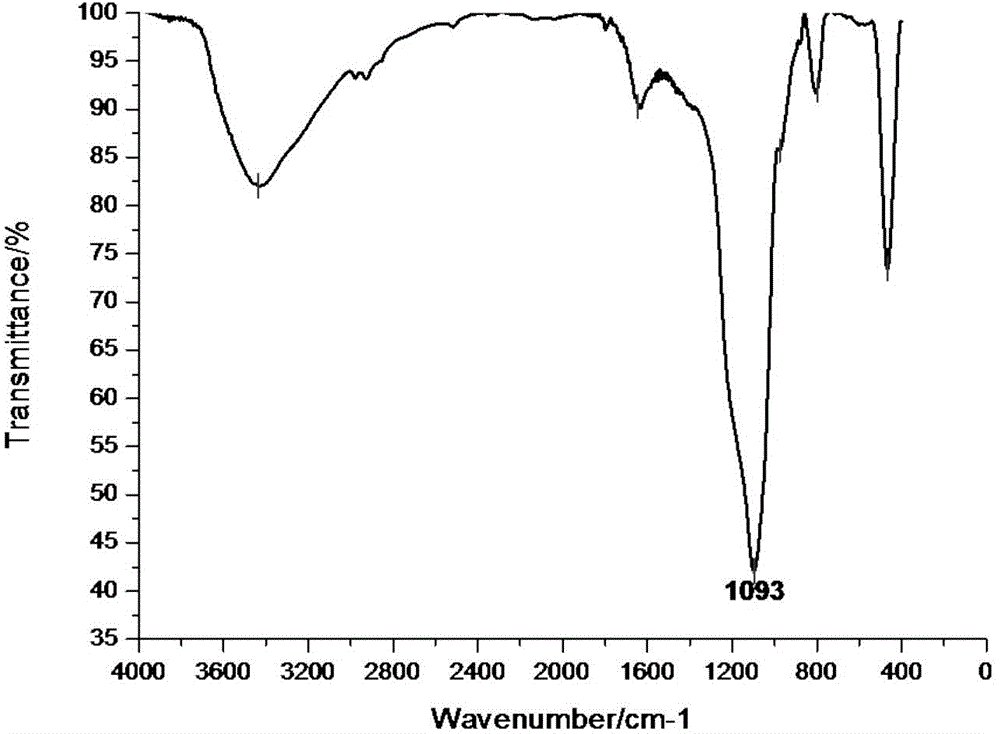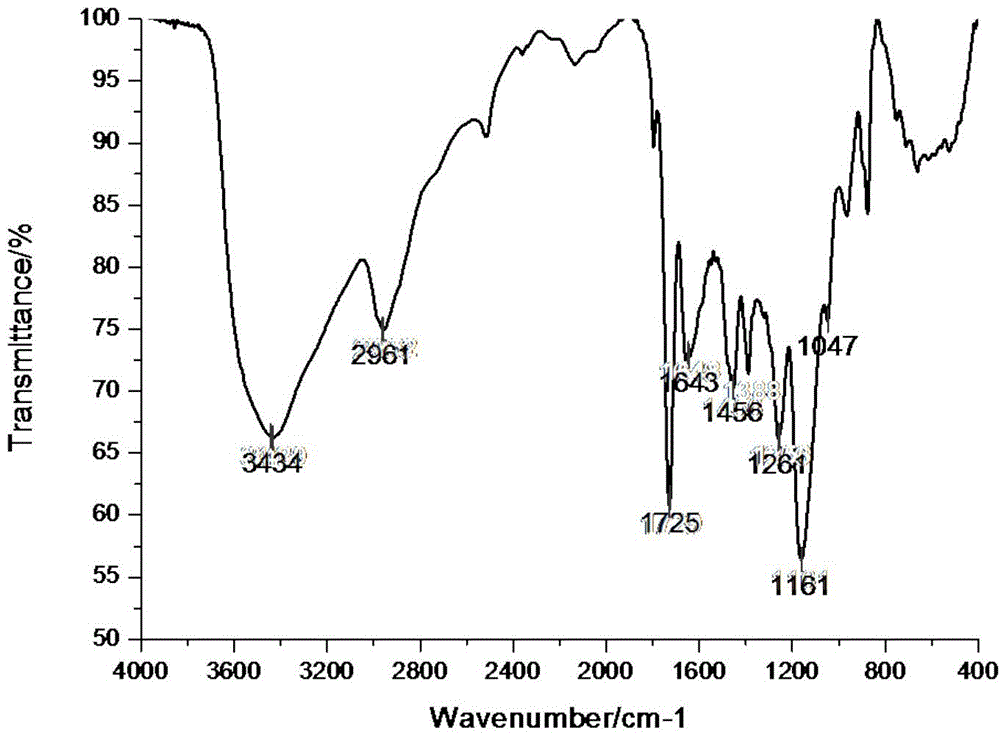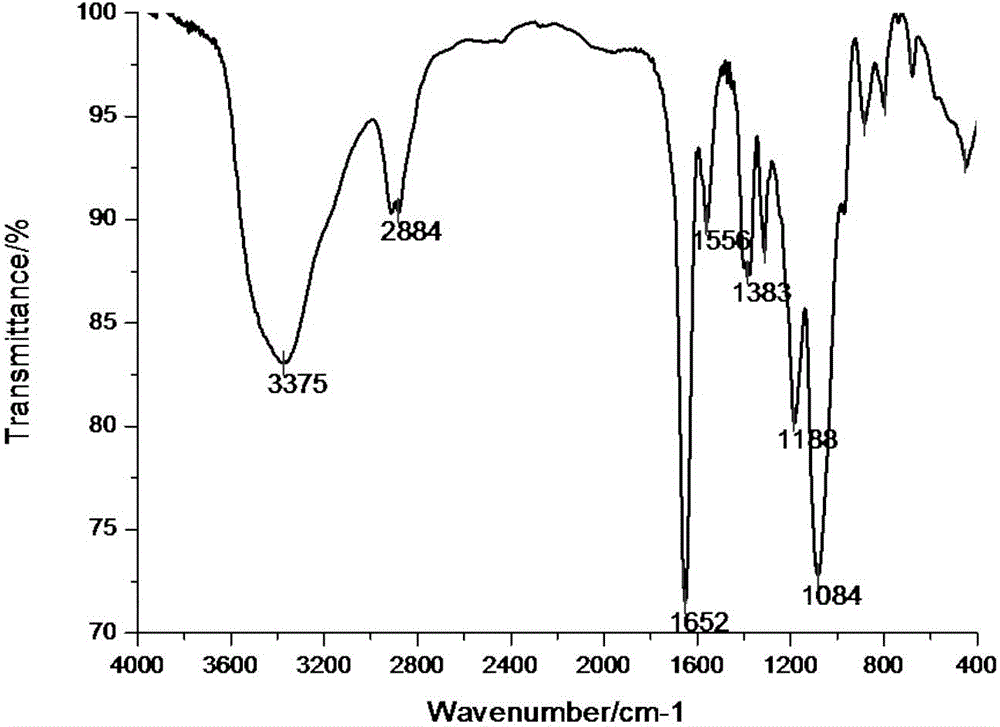Preparation and application of nano silica-based doxycycline molecularly imprinted polymer
A technology of molecular imprinting and doxycycline, which is applied in the preparation of test samples, other chemical processes, chemical instruments and methods, etc., can solve problems such as oxytetracycline doxycycline residues and the impact on public health
- Summary
- Abstract
- Description
- Claims
- Application Information
AI Technical Summary
Problems solved by technology
Method used
Image
Examples
Embodiment 1
[0022] (1) By adding 5mL of water, methanol, N,N-dimethylamide, acetonitrile, acetic acid, ethanol, acetone, chloroform, and tetrahydrofuran as solvents, investigate the dissolution effects of different solvents on DOC and MAA, see Table 1. Considering comprehensively, N,N-dimethylformamide was selected as the porogen.
[0023] The dissolving effect of different solvents of table 1 to DOC and MAA
[0024]
[0025] (2) The effect of the ratio of functional monomer MAA, cross-linking agent EDMA, nano-silica and template molecule DOC
[0026] Effect of the ratio of functional monomer MAA to template molecule DOC dosage:
[0027] The experiment fixed the amount of template molecules, changed the amount of functional monomers, and investigated the functional monomers and template molecules when the molar ratio of functional monomers and template molecules was 2:1, 4:1, 6:1, 8:1, and 10:1. After fully combining the template molecule with the functional monomer in the N,N-dimet...
Embodiment 2
[0045] Compare the packing effects of MIP and diatomaceous earth with mass ratios of 1:0, 1:1, 3:2, 2:1, and 3:1. The rate of the sample solution passing through the molecularly imprinted solid phase extraction column (MISPE) and the adsorption effect on the template molecules were compared, and the results are shown in Table 3.
[0046] Table 3 Selection of Preparation Conditions for Molecularly Imprinted Polymer SPE Columns
[0047] Polymer: diatomaceous earth 1:0 1:1 3:2 2:1 3:1
[0048] Filtration rate (mL / min) 0 2.5 1.8 1.2 0.4 Adsorption capacity (μmol / g) 0 19.8 23.3 30.1 35.8
[0049] It can be seen from Table 3 that when the ratio of MIP to diatomaceous earth is 3:1, the adsorption effect of MISPE is better, but the sample loading rate is too slow. When the ratio is 1:1 and 3:2, although the sample passing rate Faster but less effective. Therefore, the optimal ratio is chosen to be 2:1.
[0050] Preparation of DOC mol...
Embodiment 3
[0053] (1) Add 1.0mmol DOC to 20ml DMF, sonicate until it is completely dissolved, add 4mmol MAA, sonicate for 30min to fully interact with DOC and MAA, add 1.0mmol nano-SiO 2 , sonicated for 30min to make nano-SiO 2 Fully dissolve, add 20mmol EDMA and 0.3mmol AIBN, sonicate for 15 minutes, mix evenly, fill with nitrogen and deoxygenate for 10 minutes, seal, react in a water bath at 60°C for 16 hours to obtain a rod-shaped polymer, grind through a 200-mesh sieve, and then pass through a 250-mesh sieve , get the powder between 200-250 meshes, set aside.
[0054] (2) Put the polymer powder obtained in (1) in 20ml of 4% HF, add 3ml of acetone and 3ml of ethanol, stir well, react for 3h, wash the polymer with ultrapure water until the eluent is neutral. The filter residue was oven-dried at 60°C to obtain nano-SiO 2 of polymers.
[0055] (3) Wash the polymer obtained in (2) with (methanol: water: acetic acid = 7: 1.5: 1.5) mixed solution, methanol, and ultrapure water until no D...
PUM
 Login to View More
Login to View More Abstract
Description
Claims
Application Information
 Login to View More
Login to View More - R&D
- Intellectual Property
- Life Sciences
- Materials
- Tech Scout
- Unparalleled Data Quality
- Higher Quality Content
- 60% Fewer Hallucinations
Browse by: Latest US Patents, China's latest patents, Technical Efficacy Thesaurus, Application Domain, Technology Topic, Popular Technical Reports.
© 2025 PatSnap. All rights reserved.Legal|Privacy policy|Modern Slavery Act Transparency Statement|Sitemap|About US| Contact US: help@patsnap.com



